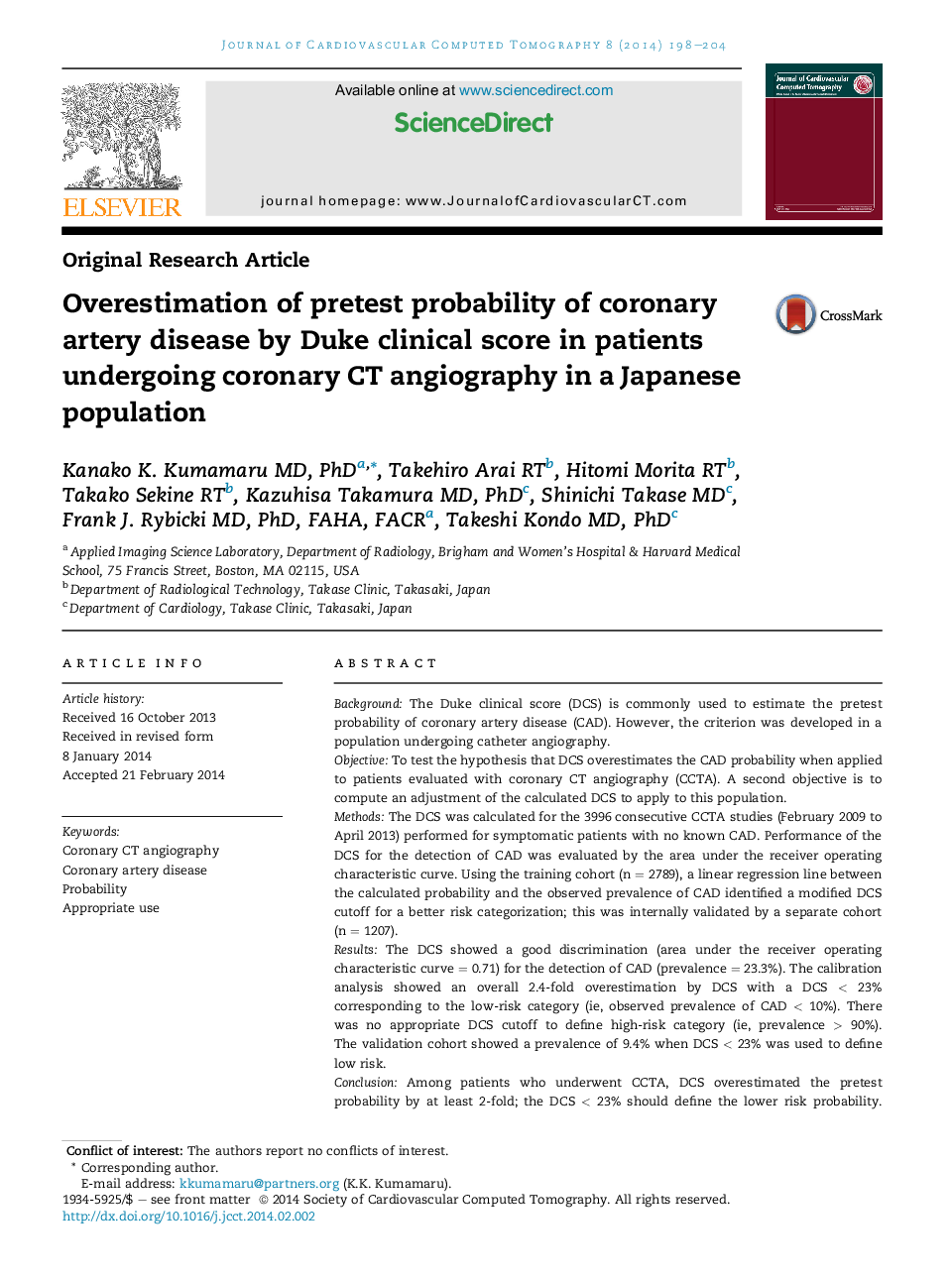| Article ID | Journal | Published Year | Pages | File Type |
|---|---|---|---|---|
| 5985083 | Journal of Cardiovascular Computed Tomography | 2014 | 7 Pages |
BackgroundThe Duke clinical score (DCS) is commonly used to estimate the pretest probability of coronary artery disease (CAD). However, the criterion was developed in a population undergoing catheter angiography.ObjectiveTo test the hypothesis that DCS overestimates the CAD probability when applied to patients evaluated with coronary CT angiography (CCTA). A second objective is to compute an adjustment of the calculated DCS to apply to this population.MethodsThe DCS was calculated for the 3996 consecutive CCTA studies (February 2009 to April 2013) performed for symptomatic patients with no known CAD. Performance of the DCS for the detection of CAD was evaluated by the area under the receiver operating characteristic curve. Using the training cohort (n = 2789), a linear regression line between the calculated probability and the observed prevalence of CAD identified a modified DCS cutoff for a better risk categorization; this was internally validated by a separate cohort (n = 1207).ResultsThe DCS showed a good discrimination (area under the receiver operating characteristic curve = 0.71) for the detection of CAD (prevalence = 23.3%). The calibration analysis showed an overall 2.4-fold overestimation by DCS with a DCS < 23% corresponding to the low-risk category (ie, observed prevalence of CAD < 10%). There was no appropriate DCS cutoff to define high-risk category (ie, prevalence > 90%). The validation cohort showed a prevalence of 9.4% when DCS < 23% was used to define low risk.ConclusionAmong patients who underwent CCTA, DCS overestimated the pretest probability by at least 2-fold; the DCS < 23% should define the lower risk probability. The DCS poorly identifies high-risk population and thus development of new CCTA-based criteria is warranted.
